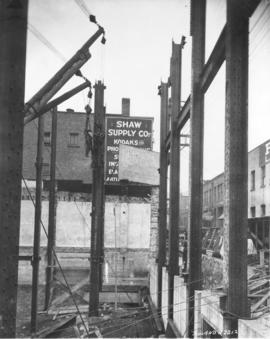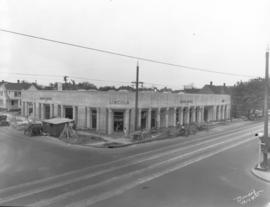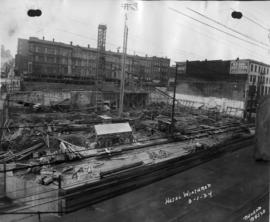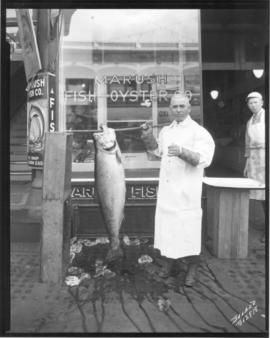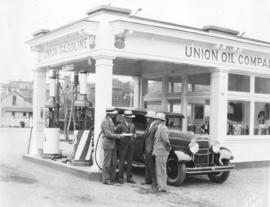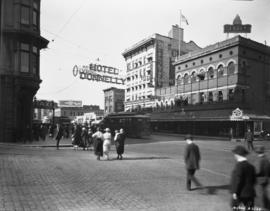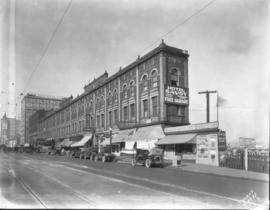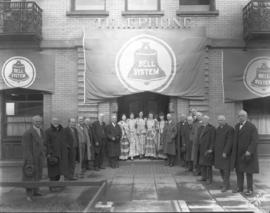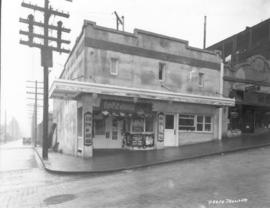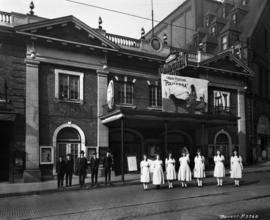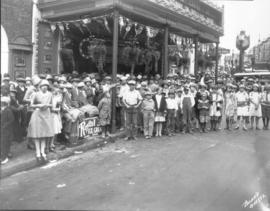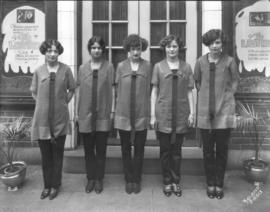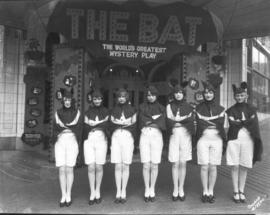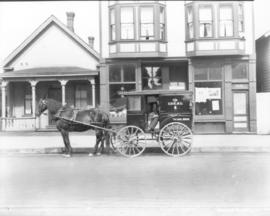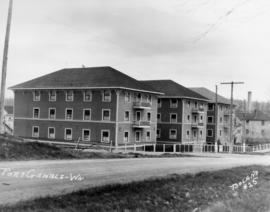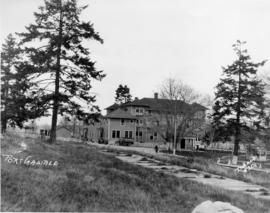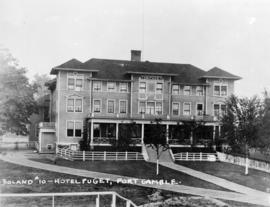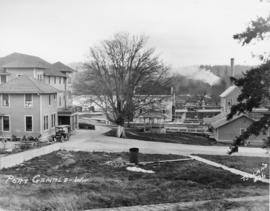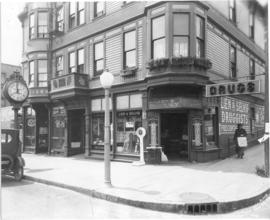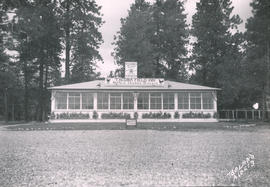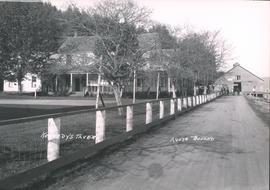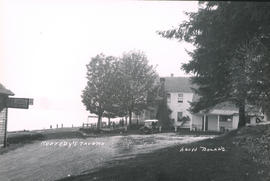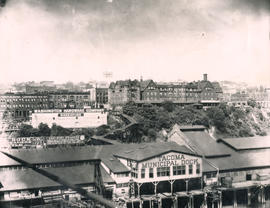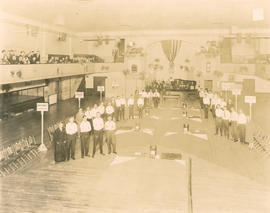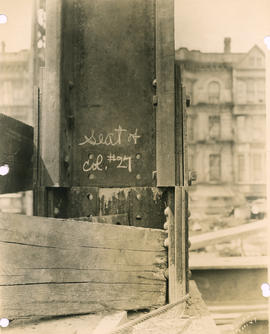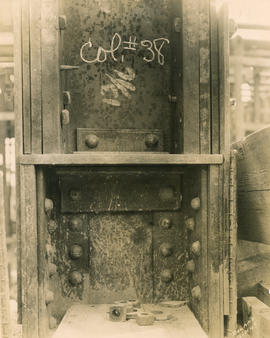- Item
- 1920-11
Part of Marvin Boland Photographs
The foreman and crew of "erectors" for the Scandinavian-American Bank being built at 1019 Pacific Avenue were photographed during a pause in work in November of 1920. The erectors were responsible for raising the 32-ton beams and 60-foot steel columns into position. The 12 men were handpicked for their steady nerves, even tempers and ability to work as team players. The first two floors alone contained over 1,000 tons of steel. The planned 16 story building rose beam by beam until January of 1921 when the bank failed and construction was shut down. The building was eventually completed in 1925 for the Washington-California Co. and named the Washington Building. (TDL 11/14/1920, pg. B-7) BU-10760, Boland B 3244, TPL-9548
Scandinavian-American Bank (Tacoma); Building construction--Tacoma--1920-1930; Construction industry--Tacoma--1920-1930;

